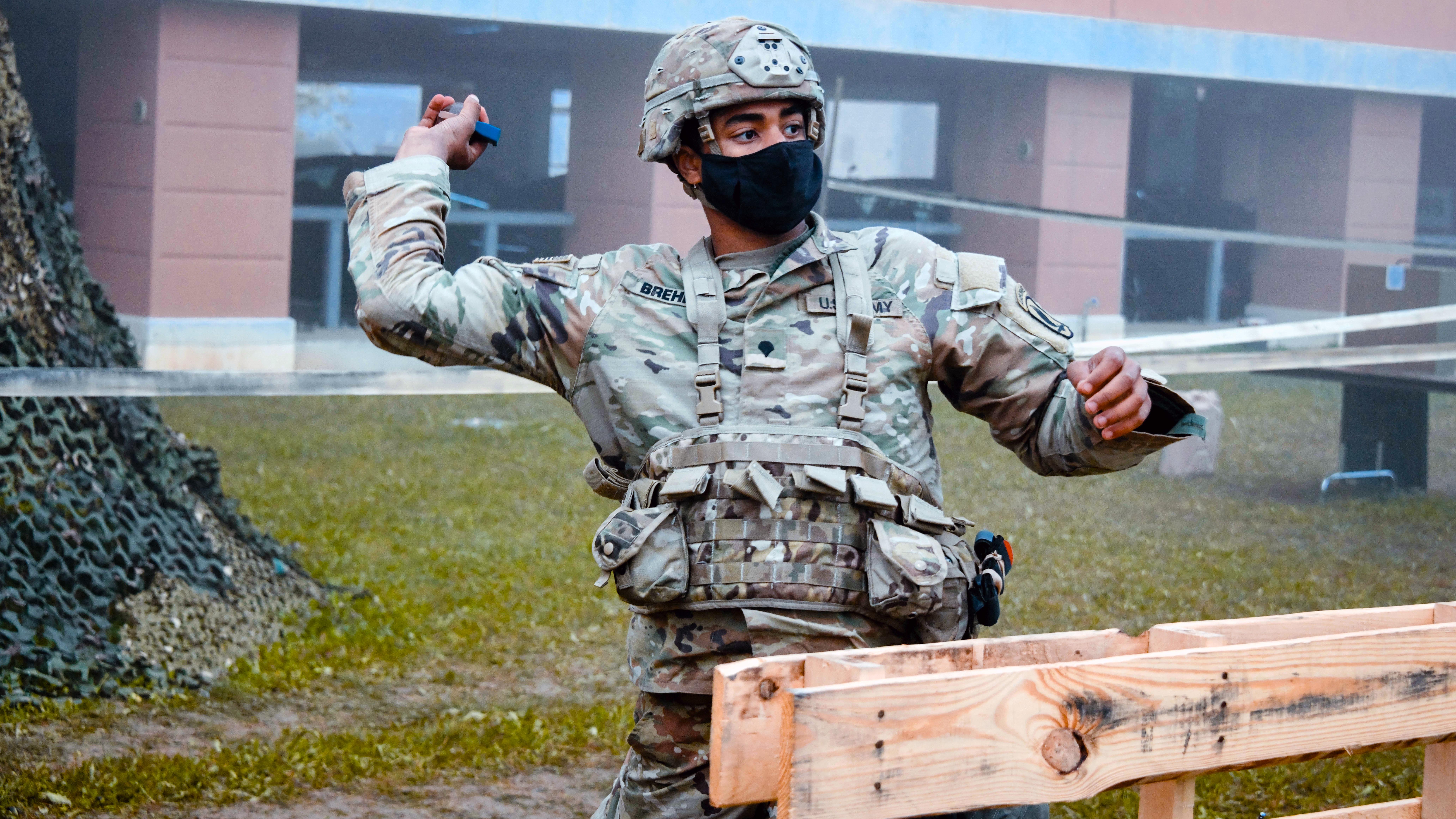Army Training Continues to Adapt During Pandemic
Army Training Continues to Adapt During Pandemic

As the Army ramps up training amid the COVID-19 pandemic—from small-unit exercises to large-scale rotations at its combat training centers—success takes teamwork and the right mindset, according to leaders from across the force.
“Our focus was to protect the nation by protecting our people so that we could, whenever the Army needed us to do anything, be ready,” said Maj. Gen. James Jarrard, commanding general of the 25th Infantry Division and U.S. Army Hawaii.
“The self-discipline and the mindset by everybody to protect themselves and then to make sure that they were protecting their families was a key element of the success,” Jarrard said.
Jarrard and leaders from different parts of the Army spoke to reporters Oct. 26 about how the Army has safely resumed training while prioritizing soldier safety.
This spring, most Army training temporarily came to a halt when DoD issued stop-movement orders to prevent the spread of COVID-19. During the lull, the Army put in place health and safety protocols to protect soldiers and allies, including physical distancing, hygiene measures, quarantine requirements and increased testing.
“We continue to fight for opportunities to train, and the protocols and the lessons that we've learned over the last several months continue to allow us to do so safely,” said Brig. Gen. Christopher Norrie, commanding general of the 7th Army Training Command in Germany.
Despite increasing numbers in Europe, the Army is in “a different place” than it was in March, Norrie said, crediting a “mature understanding” of the COVID-19 environment and threats.
With training underway again in Europe, Norrie said basic protection protocols work in stopping the spread of COVID-19 among soldiers—but it takes “engaged leaders to ruthlessly enforce” standards.
“I don't think anyone could have imagined when we started to cancel or modify exercises earlier this year, just how much this virus would impact the world, but we expect to operate in this environment for the foreseeable future,” Norrie said.
“We modified exercises and our daily lives to protect our formations, families and host nations, but we never stopped training, either at the small-unit level or at scale,” he said.
Instead, Norrie said, the Army adopted a “bubble system,” which requires units to be quarantined and tested before entering a training environment.
Using this system, more than 6,000 U.S. and Polish soldiers safely participated in a division-level exercise in June—the “first major training event ... across the Army” since Defender-Europe 2020 was cut short three months earlier, he said.
In August, the 173rd Airborne Brigade of Vicenza, Italy, was certified at Exercise Saber Junction—an annual U.S. Army Europe-directed exercise—and returned to home station with “zero instances” of COVID-19, Norrie said.
The Army has also implemented quarantine and testing requirements, limited movement and small group training at initial entry training.
Today, less than 3% of trainees have tested positive for the virus, according to Maj. Gen. Lonnie Hibbard, commanding general of the Center for Initial Military Training.
“This is very much a team effort that requires not just our soldiers, but our families and all the members of our community here to keep everyone safe,” Norrie said.

